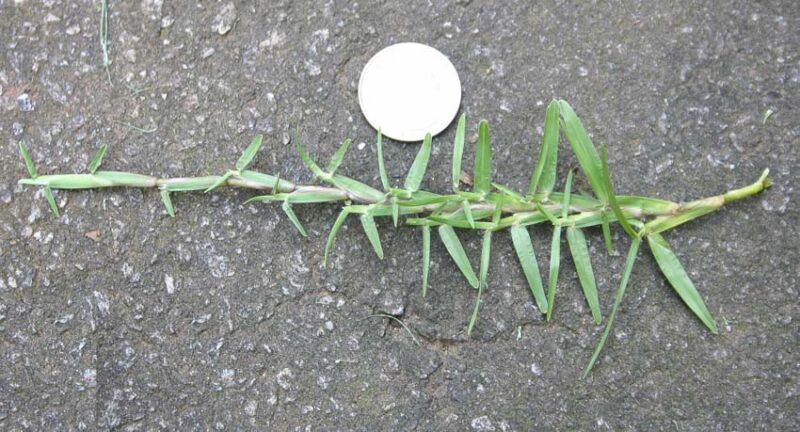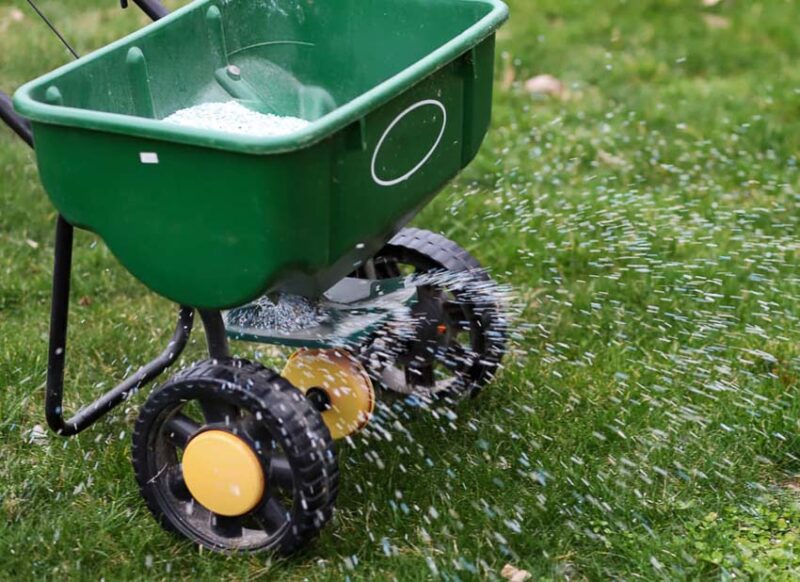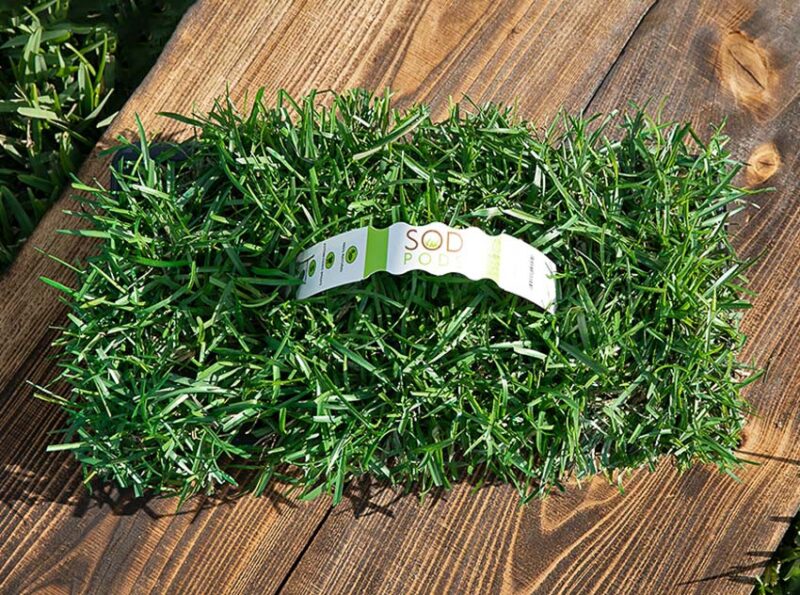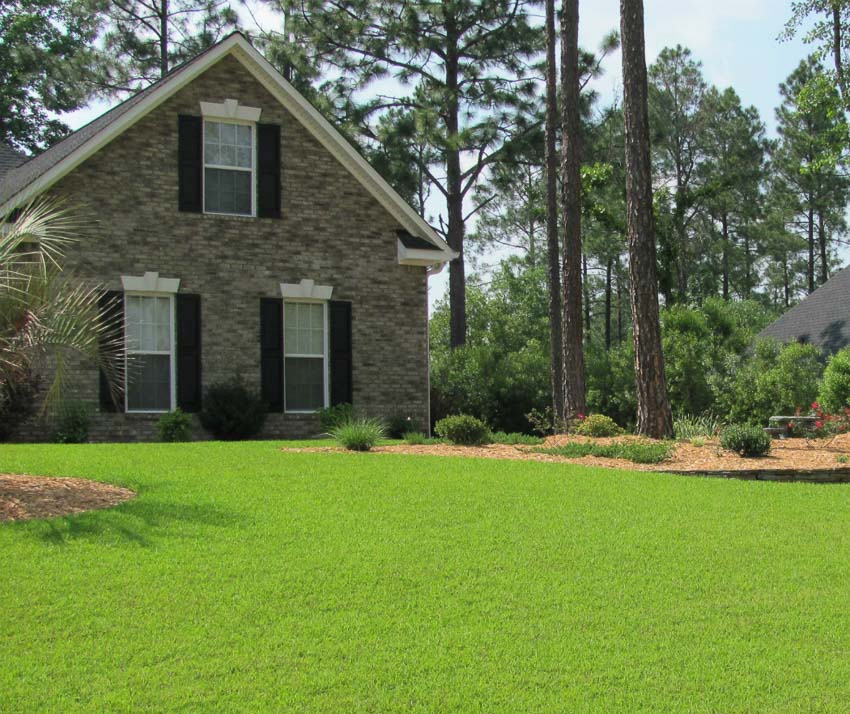The wonderfully named centipede grass (Eremochloa ophiuroides) is a popular lawn grass that can be a great choice for you, depending on the prevailing conditions where you live. A native of China, it now also grows widely across the West Indies, South America, and West Africa.
In the United States, it thrives in the sandy soils of the southeastern states, from South Carolina to Florida. To the west, it grows happily in the Gulf Coast states as far as Texas.
Further west, the soil is far too alkaline and can turn the grass an ugly yellow. Going any further north, temperatures become a problem. The grass is very sensitive to cold and will die in temperatures below 5F.
For gardeners, perhaps its greatest feature is that it grows happily in poor soil and requires little maintenance. Establishing the lawn in the first place takes a little more work, however.
Appearance

Centipede grass is a relatively slow-growing, perennial variety with a lime green color. It is quite coarse in texture and forms a dense turf via its creeping growth tendency.
The grass spreads through its slender stolons , which have short upright stems that resemble centipedes, hence the name! The stolons terminate in a delicate, purplish flowering stem.
Key features of centipede grass
- Excellent heat tolerance.
- Tolerates low soil fertility levels, requiring less feeding than some other grasses.
- Slowest growth rate of common warm-season lawn grasses. The minimal upkeep has led to its alternative name Lazy Man’s Grass!
- Prefers acidic soil and tolerates a pH value of as low as 6.0.
- Sensitive to alkaline soils and cold, rendering it unsuitable for the majority of US states.
- No dormant period. In the right conditions, it may remain green all winter.
- Relatively shallow roots, meaning despite high heat tolerance, it has low drought tolerance.
- Does not need dethatching or lawn aeration.
- Relatively shade tolerant.
- Less salt-tolerant than some other popular grasses.
- Does not tolerate heavy foot traffic, so is unsuitable for purposes such as sports fields.
- Costs of seed and sod plugs are at the higher end of the range.
Seeding your lawn

The ideal time to seed a new lawn with centipede grass is early to late spring. You should seed after any danger of frost has passed when the soil is at a temperature of 65–70F.
Success in establishing the lawn depends on good preparation, so it may be necessary to employ a contractor with the correct tools. It may also be possible to rent the necessary tools from a home improvement store if you prefer to do the work yourself.
Till the soil to loosen compacted material, then pulverize, level, and firm the soil.
In order to distribute seed over the prepared area, mix approximately 1/3 lb., of seed with about a gallon of fine sand. Spread the mixture by hand or with a seeder.
After seeding, use a roller to firm the ground again and keep it moist but not wet for around three weeks.
If you are dealing with a very large area that is impractical to water, try to delay seeding until a period when the soil contains adequate moisture.
Finally, fertilize with a complete fertilizer (containing the three primary nutrients nitrogen, phosphorus, and potassium). Aim for a pound of nitrogen per 1,000 square feet.
Following these procedures, you should be rewarded with a beautiful covering of centipede grass within three months.
Alternatives to seeding the lawn

A lawn of centipede grass can also be created using sprigs or sod plugs, which you plant in rows about a foot apart. This is more labor-intensive than spreading seed.
Care for the newly planted sprigs in the same way you do seed. Sod plugs require less care but still need adequate watering for several weeks.
The time required to achieve a full-coverage lawn is about three months, so there may not be as many advantages to these methods, compared to seeding. Sod plugs can also be more expensive than seed.
Overseeding centipede grass
If your lawn eventually starts to show signs of thinning and is starting to lose its beautiful green hue, it may be time to add more seed to your existing lawn, a process known as overseeding.
As centipede grass is a warm-season grass, it grows best in late spring and early summer. Wait until the last danger of frost has passed before overseeding, but also make sure to do it before temperatures get too hot in high summer.
Follow these steps to overseed your lawn successfully:
- Remove debris from the lawn.
- Mow the lawn to a height of one inch (save the clippings, as you can use these to cover the seed later).
- Aerate or rake the lawn. Try to break up any compacted soil. If this is too difficult without damaging healthy grass, rake the lawn hard with a metal rake.
- Spread seed evenly by hand or use a broadcast spreader for large areas.
- Cover new seed with a very thin layer of grass clippings—soil or sand—to a depth of no more than an eighth of an inch. Any more than this and the seed may not grow. Fertilize the lawn with a “15-0-15” fertilizer (contains no phosphorus).
- Water twice a week to a depth of several inches. Increase the watering if the weather is very hot. Return to normal levels of watering after 3 to 4 weeks.
- Mow the lawn to 2 inches for the first few months after overseeding.
Caring for your centipede grass lawn
Once you have your beautiful lawn of creeping centipede grass, it is important to take care of it throughout the year. Here’s how to keep your grass in excellent condition.
Early spring to early summer (February to May)
This is a period to think about weed prevention, especially annual weeds such as Crabgrass. Pre-emergent herbicides (to stop the appearance of these weeds) are usable before the soil reaches 55F.
If you have an established lawn that needs mowing, aim for a height of 1.5-2 inches. Never remove more than a third of the length of the blade of grass.
Feed the lawn with 1 pound of nitrogen per 1,000 square feet.
If you have tested the soil and found that it is too alkaline, it may be necessary to use lawn iron supplements.
Water the lawn during very dry periods. Deep thorough watering to a depth of 4–6 inches is ideal. Only do this once the grass is showing signs of stress and is wilted and discolored. More frequent, shallow watering will encourage shallower roots and could make the lawn less drought-tolerant overall.
Summer (June to August)
Continue with mowing and watering, as in the spring.
You may need to carry out pest control, although centipede grass has very few problems with pests when grown in the right conditions. Common pests include grubworms, nematodes, spittlebugs, ground pearls, and mole crickets.
Avoid adding excess nitrogen, mow regularly and your lawn should recover from the activity of most pests.
Fall (September to November)
Continue with mowing as required. Treat weeds with a herbicide, approximately six weeks before you expect frost.
Feed the lawn with nitrogen as in the spring. Rake the lawn to keep it free from leaves and debris.
Winter (December to February)
It is ideal to avoid mowing in this period unless mowing is important for the appearance of the lawn. Water very minimally, and only if required to prevent desiccation.
Tips on soil nutrition

Centipede grass prefers soil with limited nutrition. The advice here refers to adding nitrogen in limited amounts only.
For sandy soils and soils low in potassium, you can use a complete fertilizer, containing the three primary nutrients of nitrogen, potassium, and phosphorus. You should still aim to only use the minimum recommended amounts of nitrogen.
Adding potassium in this case will encourage root development and reduce the chance of the grass dying off during winter.
Avoid continuous use of any fertilizer containing high levels of phosphorus, as this can contribute to iron deficiency in centipede grass.
As already mentioned, non-ideal conditions may lead to iron deficiency in the grass. An application of iron sulfate or iron chelate may correct this.
It is impossible to give hard-and-fast rules for fertilizing your soil. If in doubt, take professional advice and monitor the condition of your grass regularly.
Final thoughts on centipede grass
Hopefully, after reading this article you now have a pretty comprehensive idea about centipede grass – planting and caring. Undoubtedly, centipede grass is a great choice for a beautiful lawn but is very dependent on conditions being right for its success.
It comes with a slightly higher cost than many of the other popular lawn grasses, both for seed and sod plugs. However, once established, you can save both money and time thanks to its slower growth and minimal upkeep, as well as its relatively good pest resistance and recovery.
So, for those in the southeastern U.S., centipede grass is an excellent choice for a vibrant and low-maintenance lawn.



